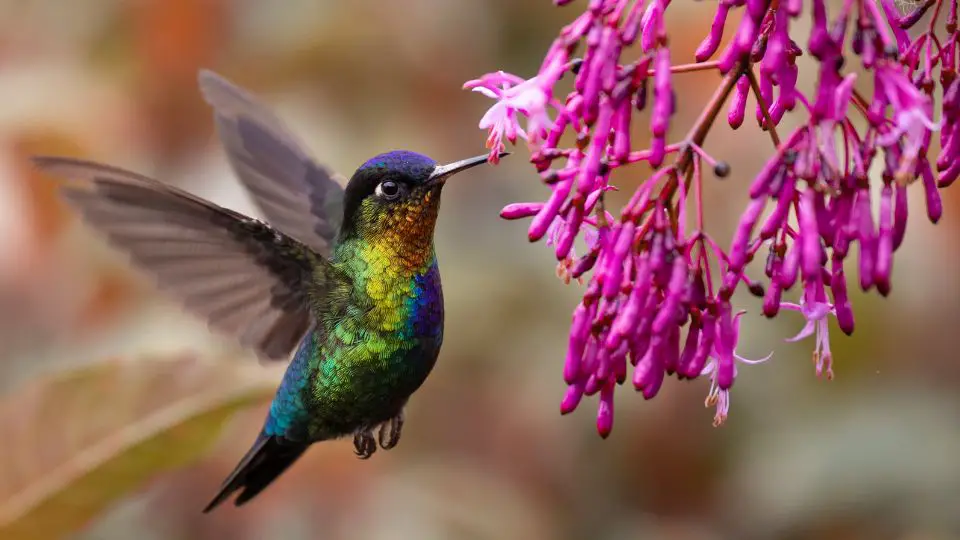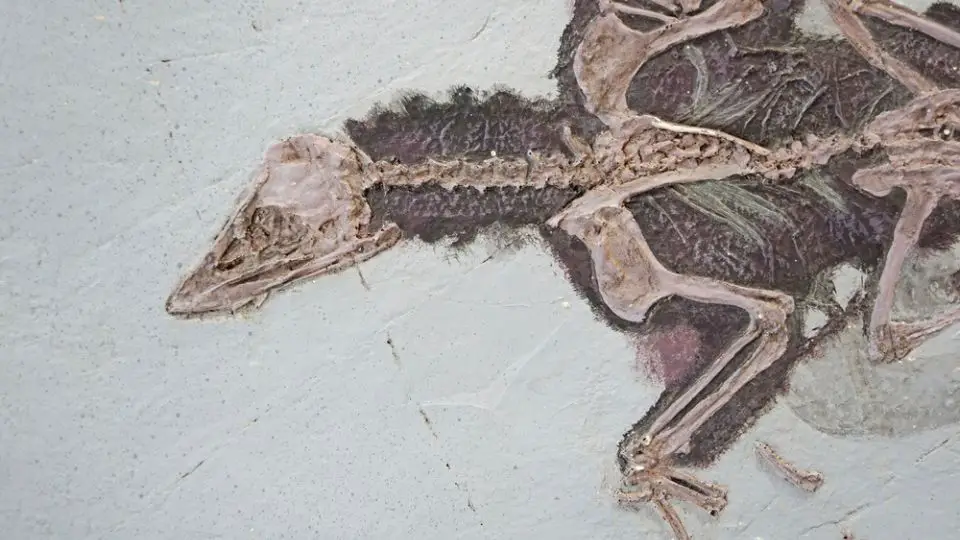Hummingbird evolution started about 45 to 55 million years ago when the first hummingbirds started developing from swifts. They were mainly present around Eurasia and later expanded to other areas of the Eastern Hemisphere. The best-preserved fossil was found in Germany.
Still, somehow, they’re only found in Western Hemisphere today. It’s unknown what happened, so they had to leave Eastern land. Still, there are over 350 hummingbird species and counting. Below, you’ll learn more about how these birds developed.
Table of Contents
What Did the Hummingbird Evolve From?
Hummingbirds are among the complex avian species. Their family Trochilidae sits under a larger group of birds—Caprimulgiformes. The Caprimulgiformes order also includes:
- Swifts
- Potoos
- Nightjars, and some other nocturnal birds
Most of these birds are known to catch insects with their short wide beaks. Furthermore, all of the bird species in the order of Caprimulgiformes have descended from a common ancestor. Based on the DNA analysis, this ancestor lived after the dinosaurs went extinct 65 million years ago.
The first primitive hummingbirds came from swifts, their cousins, around 45 to 55 million years ago. Ever since, they’ve evolved and acquired several adaptations that help them survive in today’s day and age. Their drinking abilities are one of the ultimate adaptations they have.
Where Did Hummingbirds Evolve From?
Tiny, hollow hummingbirds’ bones have rarely turned into fossils. However, experts found some of the oldest hummingbird fossils in Caucuses and Western Europe. Based on their findings, they concluded that these tiny birds first appeared in Europe and Asia.
The earliest known hummingbird fossils were discovered in Germany. These fossils show hummingbirds were around 47 million years ago and looked like swifts, unlike the hummingbirds you see today. Other findings revealed that hummingbirds developed their bone structure approximately 30 million years ago. This bone structure allowed them to hover as hummingbirds do now.
One of the most interesting facts is that all living hummingbirds were found only in the Western Hemisphere. Therefore, it’s safe to say they originated in the Old World. Still, somehow they aren’t there right now—at one point, the remaining birds migrated to North America. Then, they spread to South America.

How Did Hummingbirds Evolve?
All hummingbird species from the Eastern Hemisphere went extinct at one point in the past 30 million years. One of the possible explanations is the competition with other birds and climate changes. However, no one knows what exactly happened, and the extinction of the first hummingbirds is still a mystery.
Those that reached South America went through diversification about 22 million years ago. This was the process of the creation of the modern hummingbirds. New species started evolving from the common ancestor in the process called radiation.
This led to more than 340 species in the hummingbird family. Most of them are found in South America. There are over 140 species of hummingbirds around the Andes Mountains as well.
Today, scientists are hoping to make a connection between hummingbird ecology, genetic data, and geographical movement. They hope to use this data to understand the rise of so many hummingbird species.
Hummingbirds Co-evolved With Plants
Another strange fact about hummingbird evolution is that it was closely tied with flowering plants. Flowers were first to evolve in a way that they attract pollinators. About 200 million years ago, flowers and insects were all around the planet. Each of these two stimulated the diversification of another in a process called co-evolution. Then the first hummingbirds appeared.
Around 45 million years ago, these tiny birds started shifting from an insect diet to a flower nectar diet. In other words, they became nectarivores. At the same time, flowering plants adapted to attract the birds. These flowers are called ornithophilous or “bird-loving.”
Then, hummingbirds proceeded to evolve. They became better at probing into flowers and also became better pollinators. This is why most modern hummingbirds pollinate multiple types of plant species.
Still, there are more questions to answer. Scientists question how hummingbirds even reached South America and found the plants there. One thing remains certain—the evolution of hummingbirds has also affected the specialization of New World flora in the co-diversification process.
The Nine Major Lineages of Hummingbirds
Current molecular phylogenetic studies show that the hummingbird family is composed of nine major clades — new species that evolved from a common ancestor:
- Hermits
- Mangoes
- Topazes
- Mountain gems
- Brilliants
- Coquettes
- Bees
- Emeralds and
- Patagona, a single-species group called the Giant Hummingbird (Patagona gigas).
The last 22 million years have been exciting for hummingbirds, as this family tree shows. It was also discovered that the deepest division is among topazes, hermits, and other species. Topazes and hermits have evolved separately from others during the last 20 million years.
What’s more, hummingbirds are still evolving into new species. Current molecular-phylogeny research will provide more data on the change in diversity in speciation. North America and the Caribbean remain the ultimate spot for hummingbirds’ development, with the Bee Hummingbird being one of the key colonizers of this area.

What Are Some Adaptations of Hummingbirds?
The evolution of hummingbirds also brought several adaptations that now help these birds survive. For example:
- Muscles that allow incredible hovering abilities.
- Wings that move around 60 times per second.
- High metabolic rate compared to other vertebrate.
- Lungs that support their bodies and oxygen needs.
- The largest hippocampal formation compared to other birds.
What Is the Hummingbird’s Adaptation That Helps Them Survive?
Their brains and beaks are possibly one of the top adaptations that help hummingbirds survive. They’re so smart they remember the position of each flower in your garden. They also know when it will refill with nectar. This explains how they know when their feeders get empty and why they remind you to tend to them.
Their beak morphology is also magnificent. They use the tip of their long tongues to lick the nectar while adapting their beak to tongue movements. Their lower mandible can widen, bending their beak about 20 degrees downwards, allowing the birds to catch the nectar in swift movements.
How Did Hummingbirds Beaks Evolve?
As noted above, the hummingbird’s beak evolved together with flowering plants. At one point, these tiny birds shifted from an insect diet to a nectar diet, and flowers supported that change. In the beginning, their beaks were more similar to the beaks of swifts.
The current beaks are longer, with a bendable mandible (jaw). Hummingbirds can still catch insects but use their tongues to grab nectar from flowers and feeders. However, it’s still not clear how exactly these birds adapted their beaks so well.

Hummingbird Evolution Overview
Current biology research shows that hummingbirds first came to be in Europe and some parts of Asia. Primary hummingbirds developed from swifts, around 45 to 55 million years ago. Bee hummingbirds were among the first to arrive in the Caribbean area and colonize it.
Today, most hummingbirds are found in South America, yet they migrate to some regions of North America. At the moment, there are over 340 hummingbird species around. What’s more, they’re still making new ones. Stay on the lookout for some new hummingbirds in your garden, as you never know when you might spot one.

